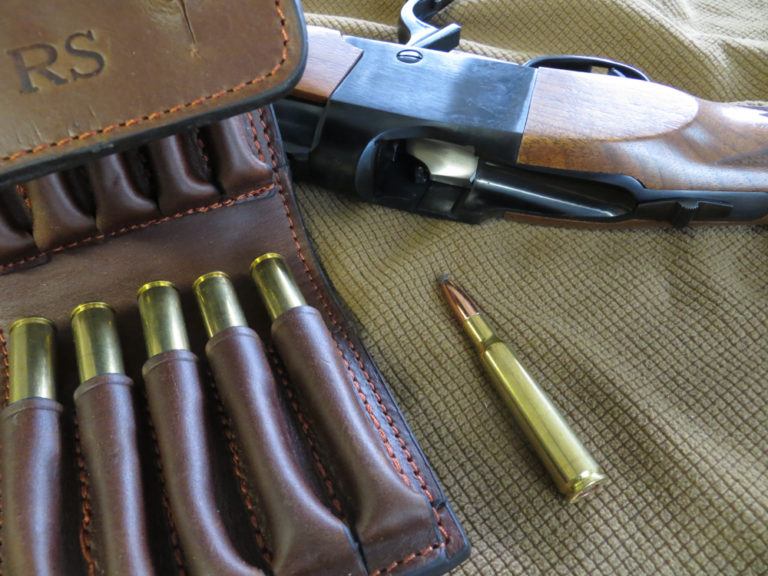
The 7mm Mauser, aka the 7X57mm Mauser, broke ground in the military and remains a top hunting choice today.
- The 7mm Mauser is also known as the 7X57, 7mm Spanish Mauser, and .257 Rigby.
- The over 100-year-old military cartridge is still useful for today’s sportsmen, and there’s plenty of components for reloaders.
- A mild-recoiling cartridge, the 7mm Mauser packs enough punch for long-range work on big game of all sorts.
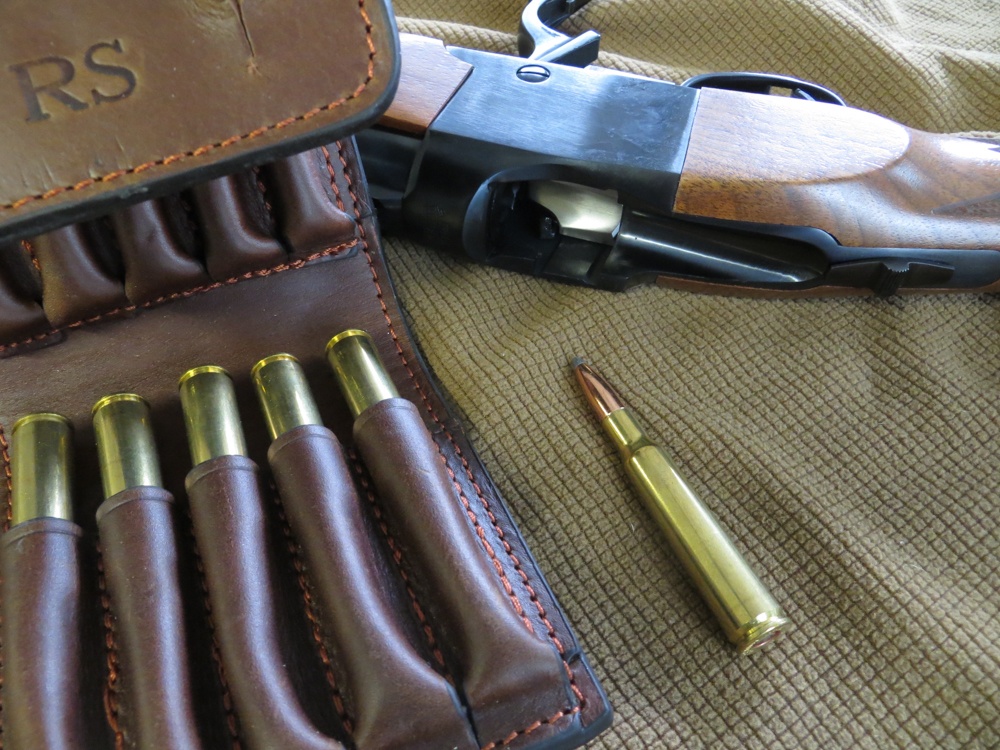
The 7mm Mauser — also known as the 7x57mm Mauser, 7mm Spanish Mauser and .275 Rigby — was originally designed as a military cartridge and chambered in the then-new Mauser Model 1892 and Model 1893 rifles. Armies found the round was accurate at long range with moderate recoil. Hunters discovered the round offered good killing power with deep penetration and minimal recoil in lightweight rifles.
By today’s standards, the 7x57mm Mauser is in the same league, albeit slightly less powerful than the .270 Win., .280 Rem., 7mm-08, and .284 Win. Sure, the 7mm Mauser is an old-timer, but this older round can keep up with newer ones. Even though this cartridge is 124 years old, there’s no question the 7mm Mauser makes an excellent all-around big-game round for all except big bears and perhaps moose.

But as has been demonstrated, the round has been used quite effectively on the biggest game animals — elephants. For handloaders, manufacturers make a wide variety of excellent 7mm bullets, allowing it to be loaded with bullets weights from 120 to 175 grains.
The 7x57mm Mauser was a game changer in military and hunting cartridges. America’s first exposure to the 7x57mm Mauser was in Cuba in 1898, during the brief Spanish-American War. It was brutally clear that Spanish forces were better equipped than American soldiers.
More than 15,000 U.S. troops attacked about 760 entrenched Spanish forces in Santiago de Cuba. San Juan heights protected the city. The only way to the city was up two hills American troops called San Juan Hill and Kettle Hill.
In the tropical heat on July 1, American troops attacked. About 200 U.S. soldiers were killed and more than 1,000 wounded from the fire laid down by the Spanish troops with their Mauser 1893 rifles chambered in 7x57mm Mauser.
Spanish losses were minimal considering the size of the attacking American force. About 115 soldiers were killed and 366 wounded. The Spanish troops’ 1893 Spanish Mauser rifles gave them an edge. Not only was the Mauser quicker to reload via a stripper clip, but the 7x57mm cartridge had a farther effective range and was more accurate.
The U.S. Model 1898 Krag-Jorgenson rifle was no match. The slow-loading Krag rifle and its caliber, .30-40 Krag, were outclassed. In the aftermath of the Spanish-American War, the United States quickly developed a better bolt-action rifle and caliber so it wouldn’t be caught flat-footed again. The rifle was a modified Mauser rifle called the M1903 Springfield, chambered in .30-06.
The 7mm Spanish Mauser really pushed U.S. military commanders to re-evaluate the country’s weapon and caliber at the time.
The 7x57mm cartridge was developed by Paul Mauser in 1892, and subsequently adopted as a military cartridge by Spain in 1893 for the M1892 Mauser rifle and the new M1893 rifle, which soon replaced the ’92. That’s why the cartridge is sometimes called the 7mm Spanish Mauser.
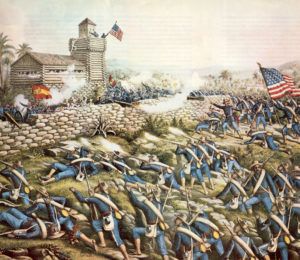
Other European and Latin-American countries — Brazil, Uruguay, Colombia and others — also adopted the cartridge and rifle for military use. It was a turning point in modern cartridge design. The 7x57mm was cutting edge at the time and used new (in the late 19th century) smokeless powder.
The original military bullet was a round-nose, 173-grain full-metal jacket. The case measured 57 millimeters long, which is why the cartridge is also called the 7x57mm. That original military bullet fired from the M1893’s 29.1-inch barrel with a 1:8.6-inch twist rate had a muzzle velocity of about 2,296 fps and a muzzle energy of 2,025 foot-pounds.
At the time, those ballistics were impressive. The round was also fairly flat shooting, and offered excellent penetration and modest felt recoil. Part of the success of the cartridge was the long, heavy bullets used. They have a high sectional density.
Sectional density, according to the Hornady Handbook of Cartridge Reloading, is “the ratio of a bullet’s weight in pounds to the square of its diameter in inches. Bullets of the same shape but with more weight in relation to their diameter retain their velocity and energy better.” The longer bullets in the 7mm Mauser gave the round its long-range capabilities and good penetration.
The 7x57mmR is like the 7x57mm Mauser. It’s a rimmed cartridge developed from the 7x57mm Mauser soon after its debut for use in break-action rifles and combination guns such as drillings and other multiple-barrel hunting guns. Suffice to say, the 7x57mmR is rare today and is mainly encountered in European break-action guns. The only modern guns I know that are chambered for the 7x57mmR are the Blaser K95, B95/97, BD14 and D99 break-action, single-shot or combination guns.
The accuracy and effectiveness of the 7x57mm Mauser was further proven in South Africa during the Second Boer War from Oct. 1, 1899, to May 31, 1902. The British were armed with the .303 British cartridge, which still used cordite as a propellant. They were overwhelmed by the Boer sharpshooters’ long-range ability with Mauser M1895 rifles chambered in 7x57mm. Maximum effective range on paper was farther than 3,500 yards, but actual use was closer.
Boer sharpshooters could easily hit man-sized targets in the 700- to 1,000-yard range effectively using open sights. Remember, at that time, optics were rare on military and sporting guns. W.D.M. “Karamojo” Bell joined the Canadian Mounted Rifles and took part in the Boer War. After the war, in the early part of the 20th century, Bell went on to use the 7mm Mauser to kill literally tons of elephants in Africa, building his fame as a big-game and ivory hunter.
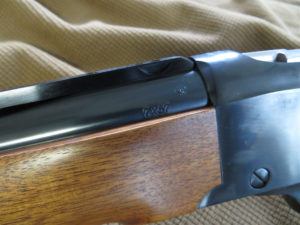
The effectiveness of the round was not lost on hunters. Sportsman discovered the 7mm Mauser made an excellent overall hunting cartridge. At the time, Mauser rifles ruled the roost with military forces, and Mausers for hunting, with lighter-taper barrels and more graceful cut-down sporter stocks, were the darlings of hunters in Europe and Africa.
Starting in 1899, prominent British rifle maker John Rigby had the importing license for Mauser rifles and crafted exquisite sporting rifles, chambering some in 7x57mm Mauser but renaming the round .275 Rigby. The dimension of a 7mm rifle bore measures .275 inches across the lands, so the caliber was given the .275 Rigby moniker. The name change helped sell rifles to English hunters.
Bell used a Rigby-Mauser Model 98 when hunting for ivory. His tally of elephants was 1,011. Of that total, about 800 were killed using the Rigby-Mauser chambered in .275 Rigby with 173-grain round-nose military ammunition. The caliber is hardly considered a dangerous-game round, but Bell was surgical with the 7mm. It was also the most reliable cartridge at the time. When hunting elephants, Bell wanted the cartridge to fire when he pulled the trigger.
The 7mm Mauser round was also light to carry and less expensive than traditional dangerous-game ammunition. Shot placement was the key to Bell’s success. On average, it took him 1.5 shots to kill an elephant. Bell took extensive notes and collected data on his kills, so he knew the details. A quick, accurate shot to an elephant’s brain stopped the beast while not alarming a herd.
His elephant kill count for one day was 19. He also shot elephants from relatively close range — 30 to 40 yards — and developed what is known as “the Bell shot,” a rear-angled shot through the neck muscles into the brain. The 7mm Mauser suited him quite well. It recoiled less than traditional dangerous-game rounds, so flinch did not hinder accuracy.
Another famous big-game hunter also used the cartridge with effect. James Edward “Jim” Corbett, who tracked down infamous man-eating tigers and leopards, used a .275 Rigby-Mauser rifle to put down the man-eating Leopard of Rudraprayag in May of 1926. Other hunters across the pond also liked the performance of the 7mm Mauser. American hunter and writer Jack O’Connor liked the 7x57mm, and in fact, his wife used the caliber extensively. O’Connor’s enthusiasm for the .270 Win., however, overshadowed his affection for the 7mm Mauser.
By 1913, the 7mm Mauser increased its range and effectiveness with the introduction of spitzer-style bullets. The French and German armies had been experimenting and adopted pointed-tip, or spitzer, bullets, which greatly reduced air drag on the bullet compared to the more common flat-nose or round-nose bullets used by militaries at the time.

The performance of the 7mm Mauser shifted into high gear with the new spitzer bullets, which weighed 139 to 173 grains. The 139-grain bullet, the military load for Brazil and Columbia, had a muzzle velocity of 2,950 fps and a muzzle energy of 2,580 foot-pounds from a typical 23-inch military bolt-action rifle of the time. Maximum effective range was slightly farther than 4,000 yards.
At one time, numerous surplus Mauser rifles and surplus 7mm Mauser ammunition were abundant. Pallets of rifles from South American countries were available at low cost to shooters. In the United States, the round was fairly common east and west of the Mississippi River.
Many surplus Mausers became sporters. American firearms manufacturers also produced rifles in the caliber. Around 1897, Remington chambered its single-shot Rolling Block rifle and the Remington-Lee M1899 sporting rifles in 7mm Mauser. Between World War I and World War II, Remington also chambered the Model 30 in 7mm Mauser.
The Model 30 was a sporting rifle based on the military P14/M1917 Enfield rifle action, which Remington manufactured for the British and American governments during World War I. With bolt-action rifles becoming more popular with American hunters, the Winchester Model 54 debuted.
The Model 54 was a new rifle design made specifically for the sporting market and is considered the first successful production bolt-action rifle for civilians. It was also available in 7mm Mauser. Today, 7mm Mauser rifles are produced in limited runs, but ammunition is quite common and easily obtained.
All of the big four U.S. ammo factories load the cartridge. Hornady, Federal, Remington and Winchester produced 7mm Mauser ammo. Most U.S.-made 7mm Mauser ammunition is loaded with bullets in the 139- to 145-grain range. European ammo uses 139- to 175-grain bullets. Hornady loads a 139-grain GMX or SST bullet in its Superformance line, which has a velocity of slightly faster than 2,700 fps — more velocity than other 7mm Mauser factory ammo. I have had excellent results with this ammo.
Winchester loads a 145-grain Power Point bullet in its Super X line of hunting ammo with a muzzle velocity of 2,600 fps. Remington loads its rock-solid Core-Lokt in 140-grain bullets to a 2,660 fps muzzle velocity. Federal loads three bullets under its Vital-Shok and Power-Shok lines: a 175-grain soft-point round-nose at 2,390 fps, a 140-grain Speer Hot-Cor soft-point and a 140-grain Nosler Partition. Both the 140-grain loads have a muzzle velocity of 2,660 fps.

Nosler also offers a 140-grain with an AccuBond bullet that clocks 2,700 fps at the muzzle. European ammunition manufacturers such as PPU Prvi Partizan in Serbia load a 139-grain soft-point at 2,657 fps. Czech-made Seller & Bellot offers a 139-grain soft-point, 140-grain full metal jacket and a 173-grain soft-point cutting edge.
The 139- and 140-grain bullets have a muzzle velocity slight faster than 2,600 fps. The 173-grain soft-point cutting-edge bullet has a muzzle velocity of 2,379 fps and leaves crisply cut holes in paper, like you fired a wad cutter, because of the cut-through edge built into the bullet’s jacket. I have also had excellent results with PPU and Sellier & Bellot ammunition. Plus, it’s typically less expensive than U.S.-made ammo.
The ballistic coefficient of the 7x57mm Mauser is high, which means it’s more efficient when flying through air. BC is a measure of a bullet’s slipperiness or air drag. In essence, it’s the ratio of the bullet’s sectional density to its coefficient of form.
The bigger the BC number, the more easily the bullet flies through the air. The 7mm Mauser is slick when it flies, so it has a flatter trajectory. When comparing the 7mm Mauser to other more modern cartridges — such as the 7mm-08, .270 Win., .280 Rem. and .284 Win. — in similar bullet weights, you’ll see the 7mm Mauser lags behind the newer cartridges by a few hundred fps and foot-pounds. (Of course, those cartridges aren’t really new. The .270 Win. was developed in 1925, the 7mm-08 in 1980, the 284. Win. in 1963 and the .280 Rem. in 1957.).
The 7mm Mauser is most like the 7mm-08 of those compared, and it would be fair to say the 7mm Mauser paved the way for 7mm-08 and all the other 7mm cartridges developed by Remington and Winchester. For me, there’s a bit of nostalgia firing the 7mm Mauser. Deer don’t seem to notice a difference, nor would, I think, wild pigs, black bear, speed goats and the rest. For moose and elk, take a cue from Bell. A surgical shot from a 7mm Mauser means you’ll be processing meat.
You can still find Winchester Model 70 and Ruger M77 rifles, older European sporters that range from a few hundred dollars to a king’s ransom depending on the rifle manufacturer, and older surplus military rifles from Brazil, Chile and other South American countries. You can also find many older Model 98 Mausers in 7mm Mauser sporterized and trimmed up for hunting. I use the round in a Ruger No. 1, and it’s a sweet rifle/cartridge combination for deer.
My Ruger No. 1 International is basically a standard No. 1 with shortened barrel and full-length Mannlicher-style stock. The falling-block action is Ruger’s modified version of the Farqharson-style action with an internal hammer and has been around since 1967. Ruger and Lipsey’s usually come out with unique calibers yearly in the rifle. I snapped up a 7mm Mauser when I had the chance and have always regretted it. I should have bought two.
A lever that locks into the trigger guard is pressed down to drop the stainless-steel block and load the rifle. Rounds easily slide into the chamber, and when the muzzle is pointed to the ground, gravity accelerates the process, and the chamber is accessible even when a scope is mounted. The action comes from the factory set to eject cartridges, but you can remove the forearm and back-off on the ejector spring strut so cartridges extract instead.
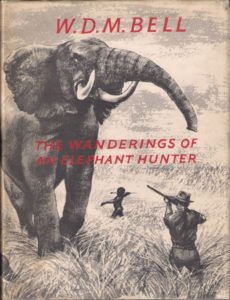
The barrel and receiver are deeply blued, and Ruger’s proprietary quarter rib and rings allows mounting of a scope. The rear sight is also mounted on the rib and folds down to accommodate large objectives. The front sight is a tiny gold-colored bead. The barrel is free-floated along the Mannlicher forearm through the steel end cap. The wood has nice figuring, and the checkering is crisp and neat, with a plastic grip cap and a gold Ruger logo.
The solid yet soft recoil pad is mated nicely to the stock. It’s nice to handle a traditional wood and blued-steel rifle. Traditional, for sure. This Ruger, because of the type of action, is also very compact even with a 20-inch barrel, making the little rifle feel lively in hand. I mounted a Leupold VX-3 3.5-10x40mm on my No. 1 International for hunting, which seems to suit it fine.
When a friend wanted to buy the scope, I obliged him and never replaced it. The open sights are adequate, and most of my shots are 100 yards or closer in the brush I hunt. It’s also a dream in the confined space of a tree stand or ground blind.
Knowing the barrel on my No.1 International was not the length used to collect factory data, I wanted to see what, if any, velocity was siphoned off because of the missing 4 inches of barrel. I found on average about 100 fps is lost in the little Ruger Mannlicher compared to factory data. Not surprising. Shooting the 7mm at 100 yards was a real chip shot. The cartridge has minimal recoil, making it ideal for beginning shooters or those of petite and small statures. The little Mannlicher is also easy to carry. And not that I like sharing my ammo with hunting buddies, but I also don’t have pals asking to borrow a few rounds. Unique calibers make good hunting companions.
The 7mm Mauser takes well to reloading. There’s a slew of 7mm bullets in all weights and types available. Bullet weights from 120 to 175 grains are effective in the 7mm Mauser. Bullet types from ballistic tip boat-tails to inexpensive round-nose bullets are available.
Powders with a medium to slow burn rate — such as Win 760, Hogdon H414, Varget and IMR 4064 — yield good accuracy. I keep it simple and load 139-grain or 140-grain bullets and load to just past 2,600 fps. The Ruger No.1 action is strong, so at times I’ve also loaded up to 2,700 fps. I have found the round performs well at 2,600 to 2,700 fps. In surplus Mauser rifles, I would keep velocity at 2,600 fps. It’s not that those older Mauser are not strong. You just don’t know how they’ve been treated through the years.
The 7x57mm Mauser, by whatever name you want to call it, was an excellent, ground-breaking military round, and as an all-around hunting round, it’s superb.
Editor’s Note: This excerpt is from Cartridges of the World, 15th Edition.

Next Step: Get your FREE Printable Target Pack
Enhance your shooting precision with our 62 MOA Targets, perfect for rifles and handguns. Crafted in collaboration with Storm Tactical for accuracy and versatility.
Subscribe to the Gun Digest email newsletter and get your downloadable target pack sent straight to your inbox. Stay updated with the latest firearms info in the industry.

![Best Concealed Carry Guns In 2025 [Field Tested] Wilson Combat EDC X9S 1](https://gundigest.com/wp-content/uploads/Wilson-Combat-EDC-X9S-1-324x160.jpg)


![Best 9mm Carbine: Affordable PCCs [Tested] Ruger Carbine Shooting](https://gundigest.com/wp-content/uploads/Ruger-Carbine-Shooting-100x70.jpg)
![Best AR-15: Top Options Available Today [Field Tested] Harrington and Richardson PSA XM177E2 feature](https://gundigest.com/wp-content/uploads/Harrington-and-Richardson-PSA-XM177E2-feature-100x70.jpg)

Thank you for this article. I’ve been shooting my 7×57 for better than 15 years now. I have taken deer at 200 – 250 yards, and moose at 100 yards with open sights and a surplus (Venezuelan contract from FN) mounted in a 98K stock. I guess I’m bragging a little, but I can confirm all that you have said about the round. In fact, the only drawback I’ve found is hunting in the brush. At close ranges (I’m talking 26yards or so), the Hornady bullets I use (162gn softpoint boat tails) don’t have time to mushroom. So I save ol’ Mickey for open country. If I could only keep one rifle, this would be it.